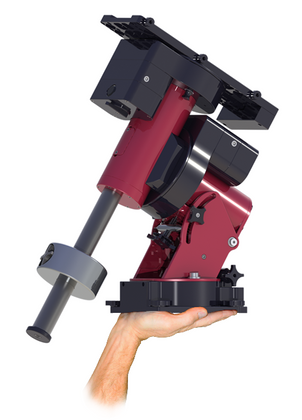

There’s nothing more disappointing than poor quality images when you first start out in DSLR astrophotography. The “ProED” glass offers color correction, which is essential for astrophotography. If you can’t quite afford a larger triplet APO refractor, this 4-inch APO from Skywatcher avoids most of the chromatic aberration issues of many doublets. Sky-Watcher EvoStar 100ED APO Doublet Refractor The hard case is very snug and doesn’t include space for any modifications you may make to the OTA (optical tube assembly).Ģ.


Includes very few accessories, not even a finder scope, although the focuser does include a mount for one.Sometimes not as sharp on closer objects.Insufficient back focusing, a common problem for triplets, with focusing needing some micromanagement.Relatively affordable for this quality of APO triplet refractor telescope.Also includes a dovetail mounting plate and a hard carry case.Solid and compact for its length, it comes with split clamp tube rings for easily securing on any compatible mount.Extremely sharp images with a powerful focuser.Blackened lens edges, two internal knife-baffles, and an extendable dew shield further enhance contrast levels.All air to glass surfaces has anti-reflection coatings for better light transmission.Wide magnification range for greater versatility.Market-leading quality optics, with a large 5.1-inch aperture.However, the telescope doesn’t come with a finder scope or eyepiece-all the money seems to have been spent on the exceptional lenses and solid telescope body. It’s still recommended to use a field flattener for optimal results.Ī dual speed, 3-inch Crayford focuser offers precise focus control over your celestial images, with the high-quality ED glass of the lens ensuring no false colors. Most triplet refractors don’t tend to produce a flat field image, but users have found the Orion 130mm produces flatter than average images. A total focal length of 910mm offers a moderately fast focal ratio of f/7 for a better astrophotography performance. Orion has designed this stunning telescope to offer superior optics for both observation and astrophotography.Ī versatile magnification range between 19x and 260x makes this scope perfect for wide field shots, yet still capable of closer shots. It’s a great example of the power of a triplet apochromatic refractor, with lenses so good it could almost be considered a DSLR telescope.Īlthough it may seem expensive with its four-figure price, it boasts a large 5.1 aperture at a much more affordable price than its competitors. This telescope is one of Orion’s top-of-the-range products and is a beast of a telescope at 23 pounds. Orion EON 130mm ED Triplet Apochromatic Refractor Telescope It just depends on how good you want the results to be-you can always cheat and Photoshop them if you want.ġ. I have chosen five telescopes which would be easy to use for any level of experience, from astrophotography for beginners to professionals. Most of the models below cost less than a thousand bucks, it’s only the very best one we looked at which breaks that barrier. How much does the best telescope for astrophotography cost? You don’t always have to spend thousands on a telescope for the best DSLR astrophotography. Although many would consider it an integral part of an astronomy telescope, I would rather see the money spent on the best optics. You will notice that all but one of the telescopes looked at below don’t include a stand or mount. The Best Telescope for Astrophotography in 2022 Explore Scientific ED80 Essential Edition.Meade Instruments Polaris 130 EQ Reflector Telescope.Orion ED80T CF Triplet Apochromatic Refractor Telescope.Sky-Watcher EvoStar 100ED APO Doublet Refractor.Orion EON 130mm ED Triplet Apochromatic Refractor Telescope.6) Conclusion Our Best Telescope For Astrophotography At A Glance


 0 kommentar(er)
0 kommentar(er)
